Low Back Pain in Nurses: Workplace Injuries and Stakeholder Roles
VerifiedAdded on 2022/10/04
|7
|727
|370
Report
AI Summary
This report analyzes the issue of low back pain among nurses in Australia, attributing it to workplace injuries. It emphasizes the importance of ergonomic education and identifies key stakeholders in mitigating this risk. Nurses, as stakeholders, are encouraged to apply ergonomic principles for personal and professional care, including safe patient handling. Hospital authorities are responsible for increasing staff numbers and improving the ergonomics of hospital equipment to reduce physiological stress. Physiotherapists and educators can introduce proper patient handling techniques. The report also highlights the role of government in regulating policies to include ergonomic education in nursing practice. The study references several research papers that support the arguments made and emphasizes the necessity of a collaborative approach involving all stakeholders to improve nurses' health and patient safety.
1 out of 7
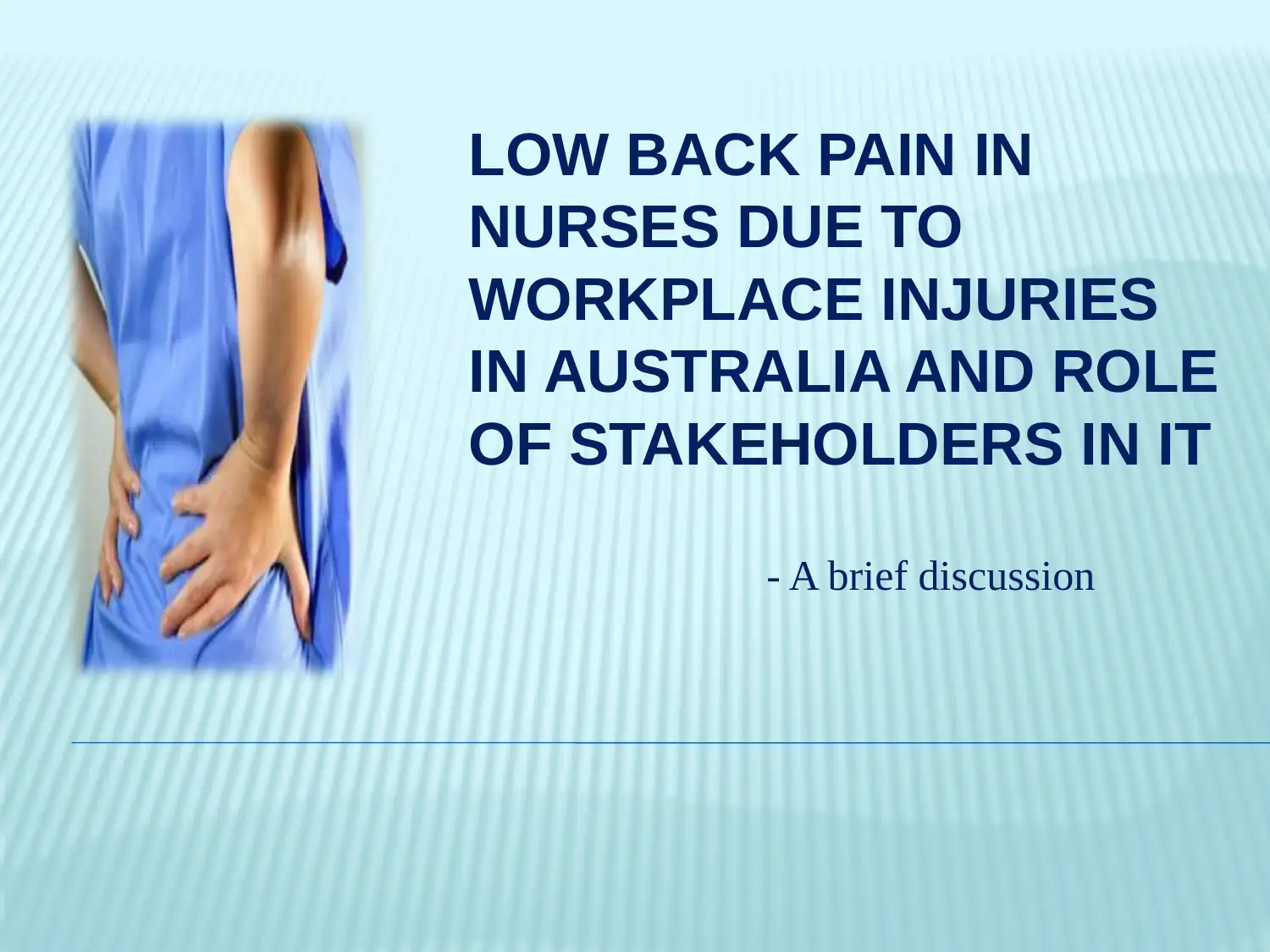
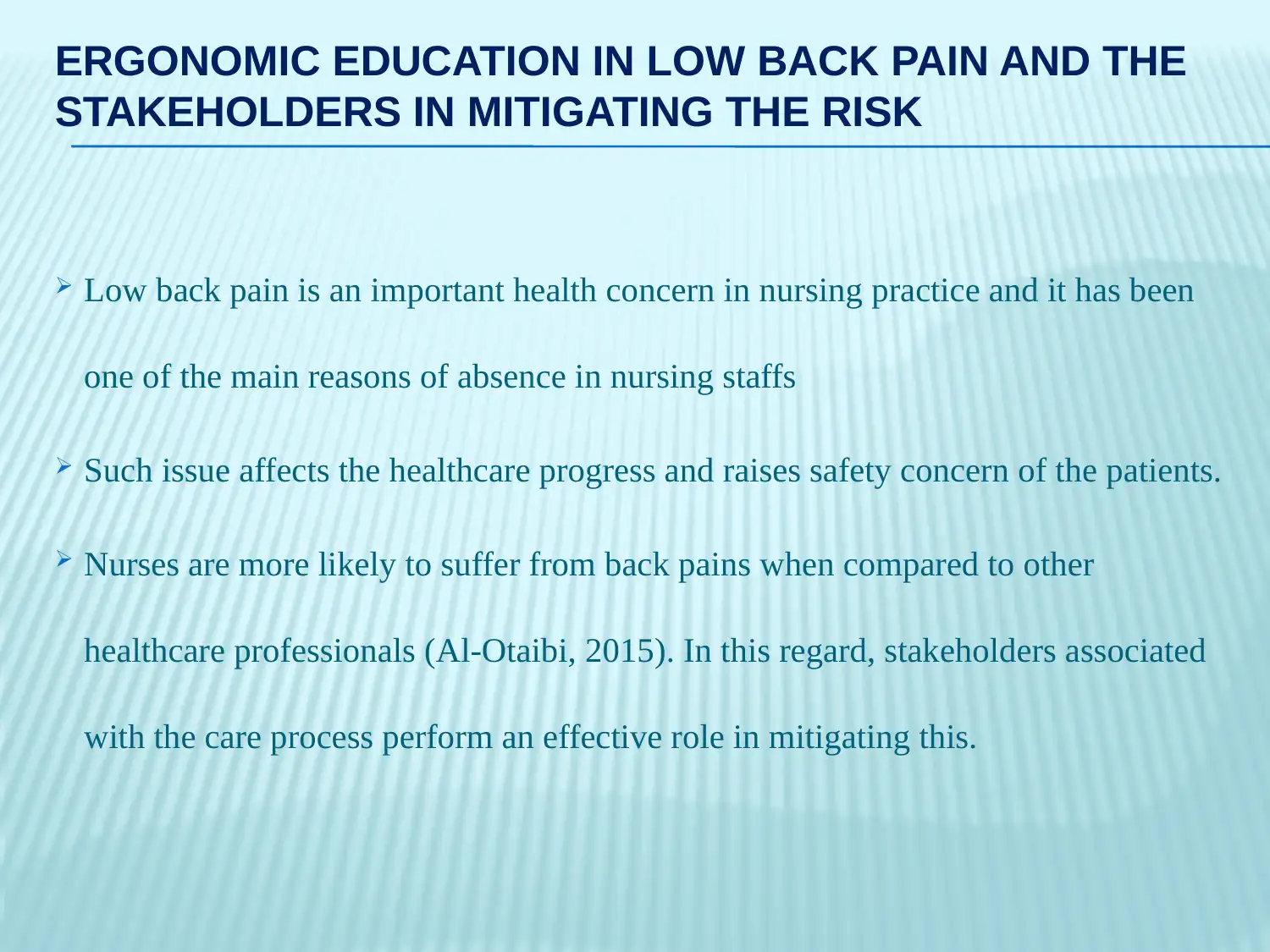
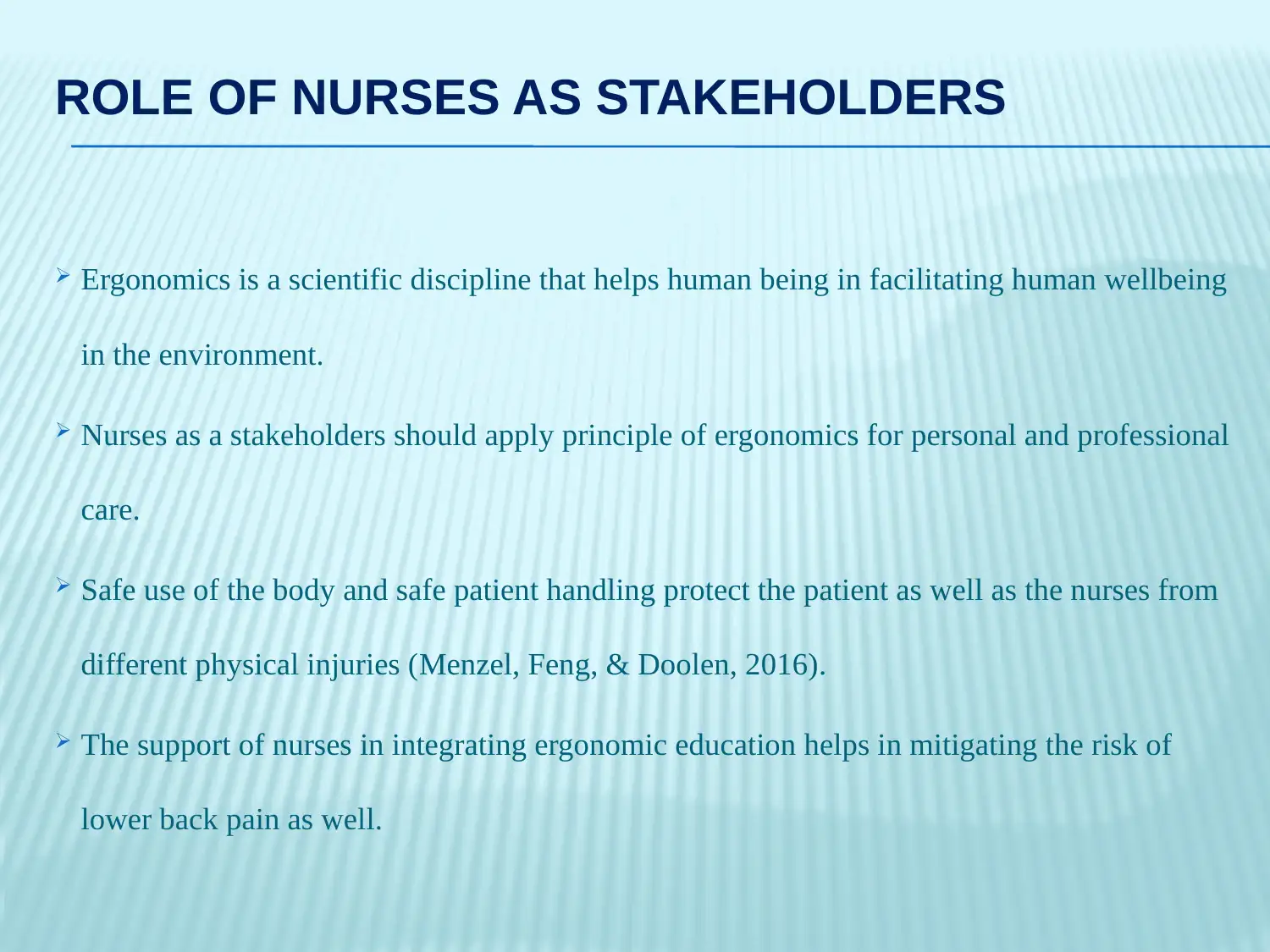

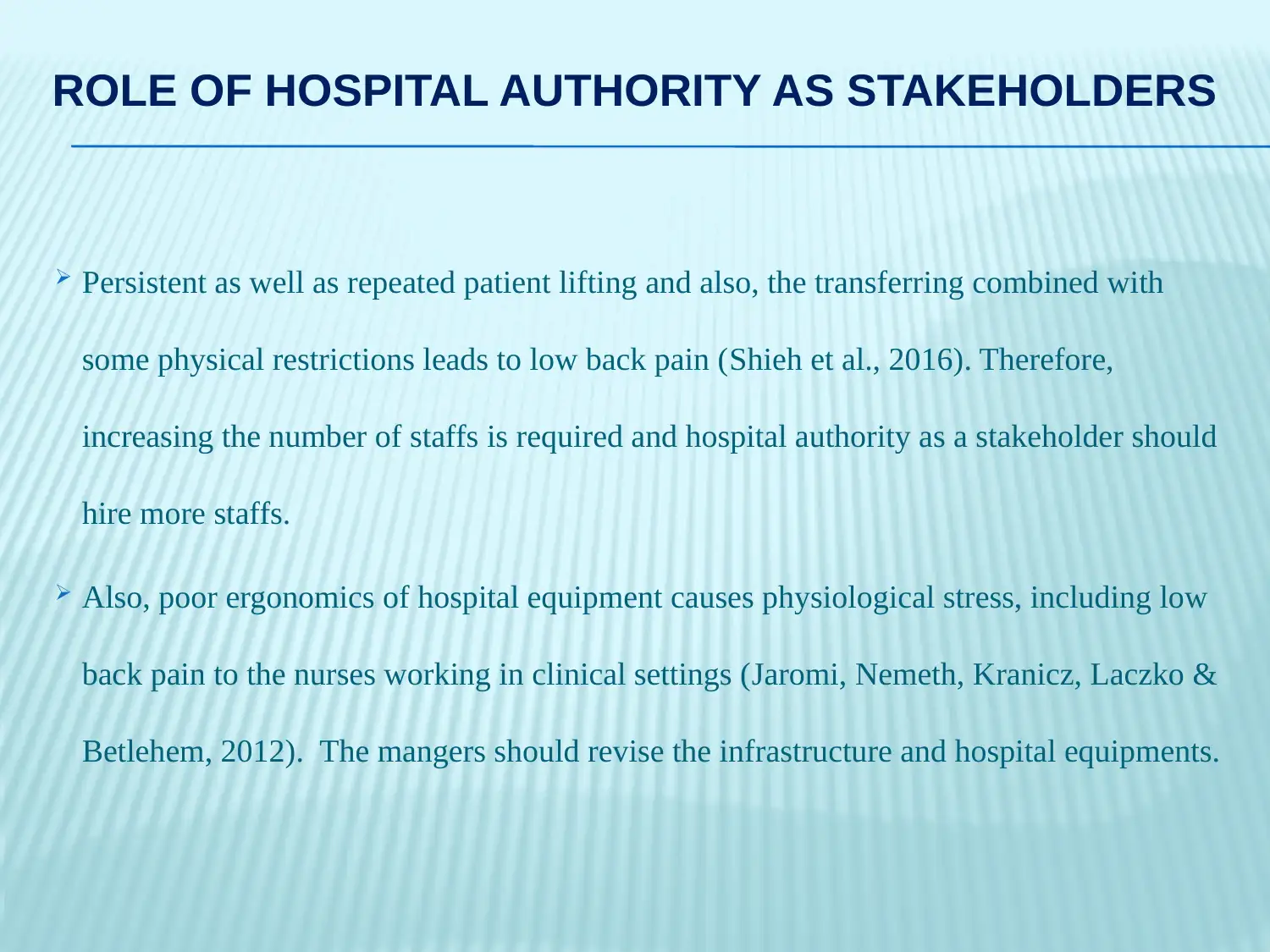
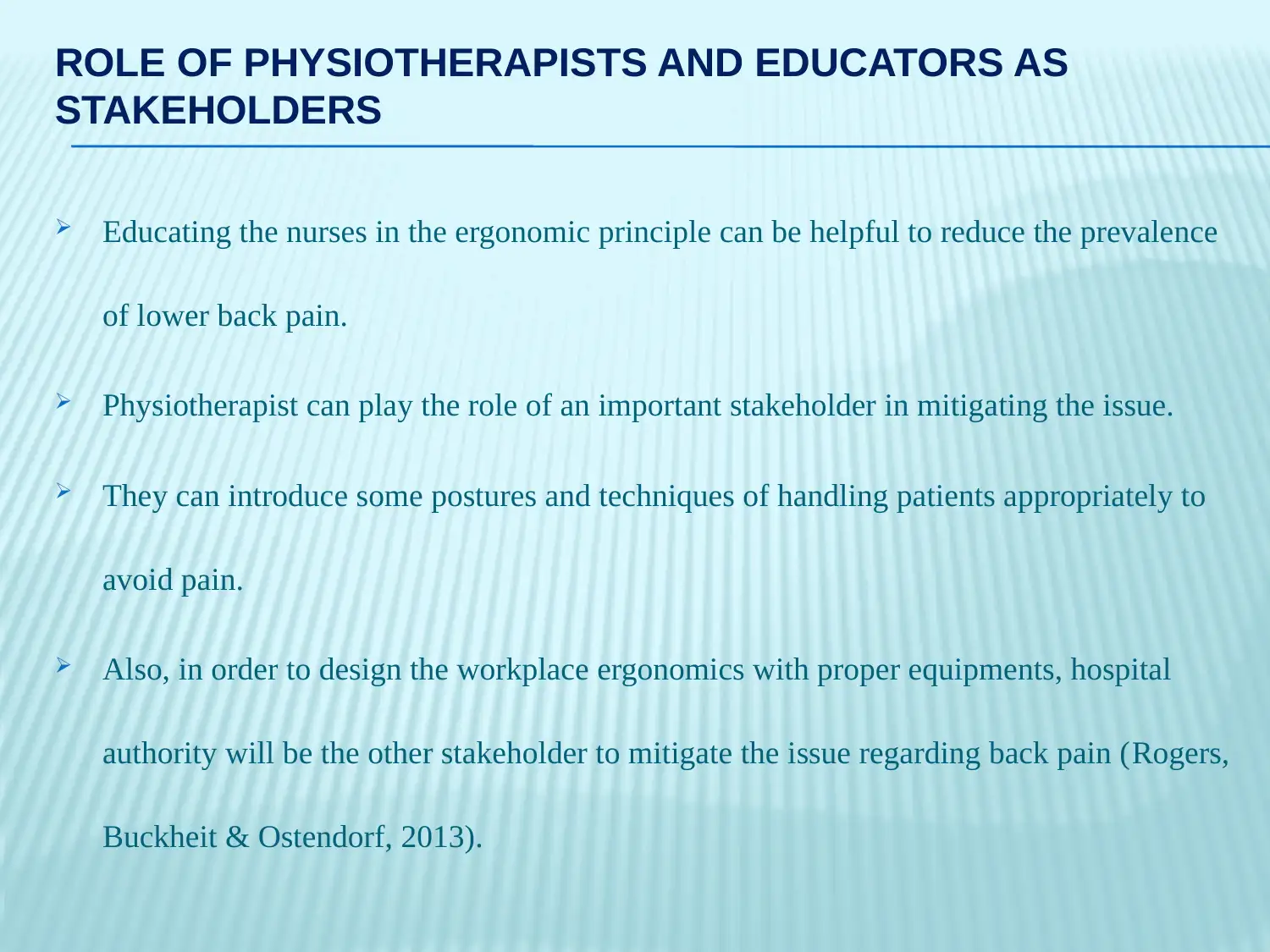

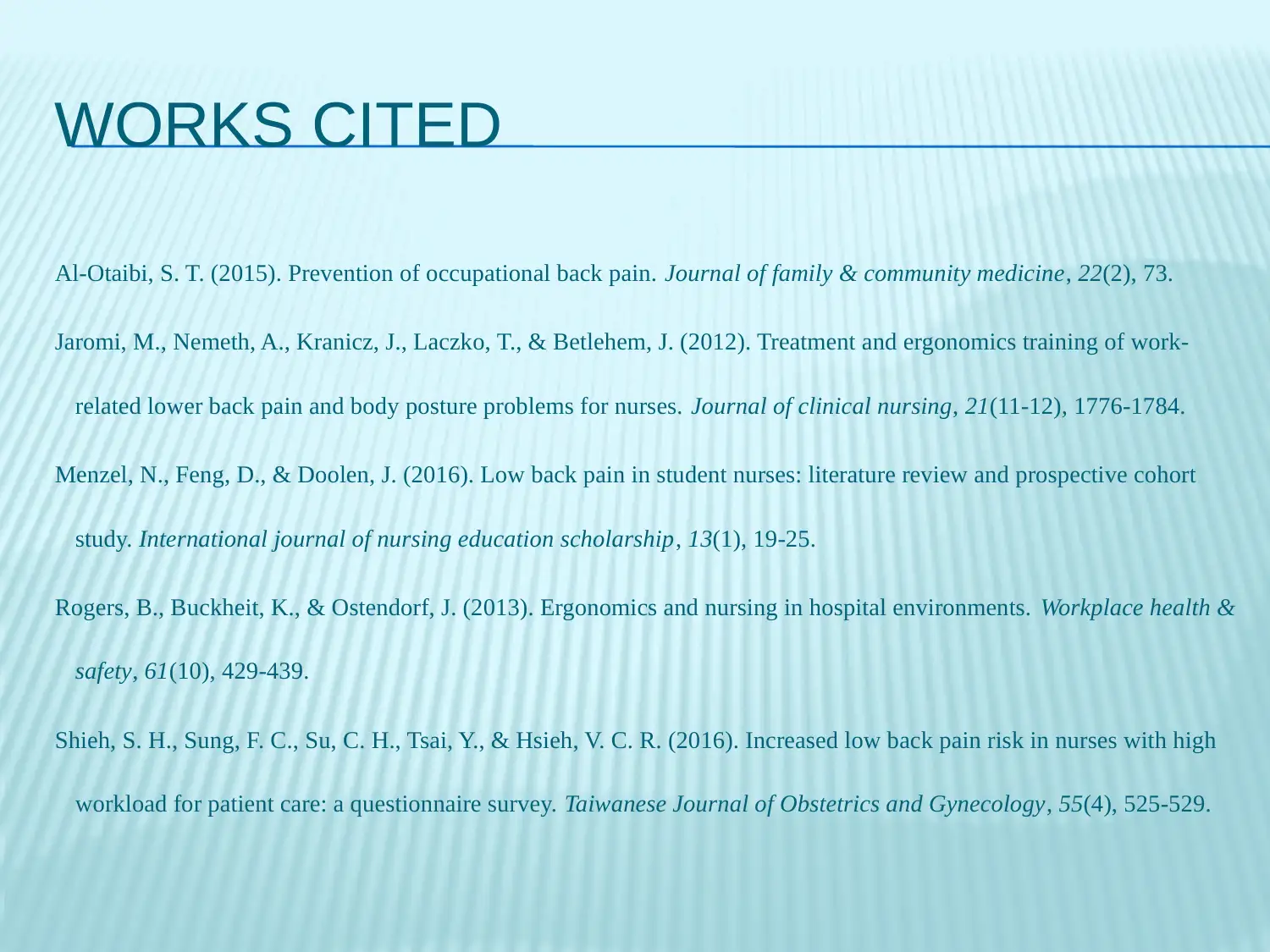






![[object Object]](/_next/static/media/star-bottom.7253800d.svg)